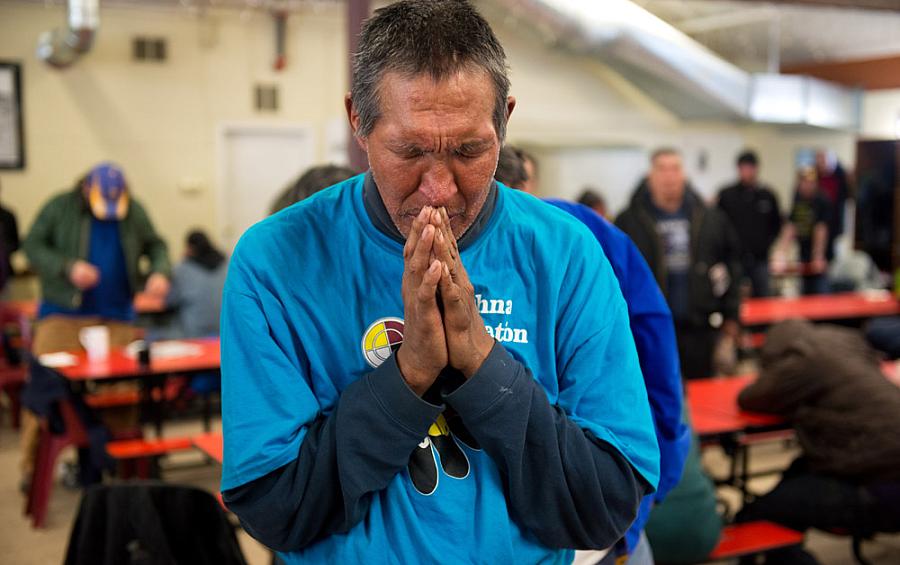In Alaska, homeless face harsh realities and high death rates

Dozens of friends and family of Gregory Jack gathered at Bean's Cafe for a memorial service on Wednesday, April 2, 2014.
Homeless Alaskans are being found dead on the street with alarming regularity. During a one-year period beginning in spring 2009, so many bodies appeared some residents in the state's largest city that spread rumors of a serial killer.
The truth is, officials say, many have simply succumbed to a combination that is simple to describe, yet hard to overcome: the bitter conditions outdoors in the sub-Arctic and severe alcoholism that left them extremely vulnerable.
Today, Anchorage (population 300,000) struggles to find ways to improve the situation for its chronic homeless. It has become the norm that shelters will operate in overflow mode. Housing-first models, which allow for continued drinking in the name of increased safety, have been introduced. Patrols assist on the streets, bringing people to a crowded sleep-off center.
Still, people die outdoors.
With the help of my National Health Journalism Fellowship, I intend to take a closer look at the segment of the city’s homeless population that is most at risk. I want to travel along their path in Anchorage, hear individual stories, discuss what’s being done to help and talk about what has yet to be tried.
For a year, Anchorage Daily News (soon to be Alaska Dispatch News) reporter Kyle Hopkins and I have been looking at alcohol’s impact in Alaska. I've been a staff photographer and video journalist at the ADN for 15 years. Our series, State of Intoxication, has delved into topics such as local prohibition laws in rural villages, public intoxication problems, and drunken driving dangers. We spent six months looking into Alaska’s high rate of fetal alcohol spectrum disorders.
In addition to numerous long-form news features, Kyle and I created a 21-part multimedia series, Alcohol & Me, to allow Alaskans to tell their own stories.
This project will continue my partnership with Kyle (also a Fellow this year) and allow us to build on what we have already begun. We hope to hear personal stories from the people we meet, explain the science that might help describe their condition and see how they live today. We hope this will humanize the stories and allow this population to exist in the minds of readers as more than people they see from their car window holding a sign or read about as another death reported in the news briefs.
